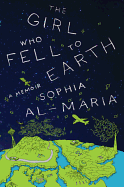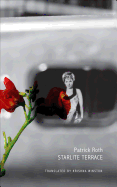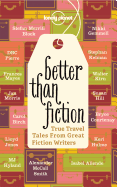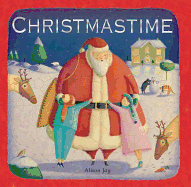Friday, December 14, 2012
Still shopping? We have more ideas for your gift-book needs. Curious about eccentric characters or cross-cultural pioneers? Check out Professor Risley and the Imperial Japanese Troupe by Frederik L. Schodt (Stone Bridge, $35). Risley was an American acrobat who brought Japanese performers to the U.S. and Europe in 1867, helping trigger the craze for Japanese culture.
 I picked up My Call to the Ring: A Memoir of a Girl Who Yearns to Box by Deirdre Gogarty with Darrelyn Saloom (Glasnevin Publishing, $20 paper) to read just a few pages. I finished it hours later, because this story of an Irish girl determined to become a pro boxer is absolutely captivating, even for someone (like me) who's not a fan of the sport. Tim Forbes left his corporate job for a dream job in sports; 10 years later, he was maxed out, so he traveled across North America to attend 100 games involving 50 different sports, hoping to rekindle his passion. In It's Game Time Somewhere (Bascom Hill, $15.95 paper), he does, with incisiveness and irreverence.
I picked up My Call to the Ring: A Memoir of a Girl Who Yearns to Box by Deirdre Gogarty with Darrelyn Saloom (Glasnevin Publishing, $20 paper) to read just a few pages. I finished it hours later, because this story of an Irish girl determined to become a pro boxer is absolutely captivating, even for someone (like me) who's not a fan of the sport. Tim Forbes left his corporate job for a dream job in sports; 10 years later, he was maxed out, so he traveled across North America to attend 100 games involving 50 different sports, hoping to rekindle his passion. In It's Game Time Somewhere (Bascom Hill, $15.95 paper), he does, with incisiveness and irreverence.
One of the funniest (and astute) books of the year is a collection of Caitlin Moran's columns: Moranthology (Harper Perennial, $14.99). Read her sharp take on Michael Jackson's memorial service, her paean to the new BBC Sherlock ("The Frumious Cumberbatch") or her assessment of Elizabeth Taylor ("She was a storm front of a woman, in sapphires") and you will be hooked.
The Comedy Film Nerds Guide to Movies (Morgan James, $19.95 paper) is a useful guidebook that's also a hoot; compilers Graham Elwood and Chris Mancini had me at "And please, for the love of all that is holy, stop making western comedies. Blazing Saddles stands alone for a reason."
Speaking of film, Downtown Abbey fans will love The Chronicles of Downton Abbey by Jessica Fellowes and Matthew Sturgis (St. Martin's, $29.99), with over 300 pages of text and illustration. --Marilyn Dahl, book review editor, Shelf Awareness
Starlite Terrace
by Patrick Roth, transl. by Krishna Winston
Starlite Terrace is a spare, sensitive quartet of stories narrated by a German expatriate living in a rundown Los Angeles apartment complex. In "The Man at Noah's Window," Rex remembers a day 35 years ago when he realized his mother was a hooker, discovers that he was named after a movie theater and quarrels with Pete, a nosy neighbor who doubts that Rex's father was really hired for close-ups in 1950s westerns--specifically, to replace Gary Cooper's hands in High Noon.
"Solar Eclipse" centers on Moss McCloud, a former Broadway casting agent who carries around the manuscript of his autobiography, written to justify himself to his daughter. The third story, "Rider on the Storm," focuses on Gary, a new Starlite resident, who persuades the narrator to give him a ride so he can borrow some money; their trip unexpectedly erupts into violence.
Finally, in "The Woman in the Sea of Stars," the Starlite's manager, June, remembers her husband, whose many infidelities included Marilyn Monroe, then segues to tales of Bugsy Siegel and the atom bomb tests in Nevada that contaminated the sands where John Wayne shot the movie that killed him with cancer.
Roth's aging characters are all very aware of mortality; their stories are confessions and excuses told by morally compromised people tangled up in their own failures and self-deceptions. Roth respects his time-battered losers, though, and offers the Hollywood mythos back to us with an authentic fascination and a perception all his own. --Nick DiMartino
Discover: Four tales of Hollywood told by a German narrator staying in a rundown Los Angeles apartment complex where the elderly residents bend his ear with their dying stories.
Mystery & Thriller
The Black Box
by Michael Connelly
The Black Box, Michael Connelly's 25th novel, comes 20 years after his first, The Black Echo, which introduced readers to Los Angeles detective Hieronymus (Harry) Bosch. These days, Bosch is working with the LAPD's Open/Unsolved Unit, and he decides to pursue a 20-year-old case that was originally his: the murder of Danish photojournalist Anneke Jespersen during the 1992 riots. Bosch never got a chance to investigate thoroughly--but, as regular readers know, Bosch never gives up. As he pursues the reason Jespersen came to Los Angeles in the first place, he finds himself investigating war crimes dating back to Desert Storm. Searching for the "black box" that will reveal the recorded secrets of Jespersen's murder, Bosch also lands (not unusually) on the wrong side of the police department's leadership.
All the strengths that Connelly's readers have come to expect are on display. He employs an expert sense of place in evoking a gritty, stark Los Angeles, and the mood of the novel is dark and brooding. The pacing is taut, the characters well developed. Bosch's side interests in jazz artists like Art Pepper and baseball greats like Casey Stengel provide depth and layers to his personality. Series readers will enjoy the updates on ongoing story lines, as Bosch's daughter, Madeline, continues to mature and his relationship with girlfriend Hannah struggles along. But like all Connelly's atmospheric, fully realized novels, The Black Box can also be read as an entirely satisfying stand-alone mystery. --Julia Jenkins, librarian and blogger at Pages of Julia
Discover: Harry Bosch's investigation into a 20-year-old murder linked to the Rodney King riots and the first Gulf War is set to a moody jazz soundtrack.
Biography & Memoir
The Girl Who Fell to Earth: A Memoir
by Sophia Al-Maria
If two parents can't stay together because their worlds are impossibly different, what does that mean for their child, who carries those two divergent worlds in her veins? Sophia Al-Maria, a Qatari-American artist, filmmaker and writer, struggled for years to forge a self-identity that felt like her own. In The Girl Who Fell to Earth, a lovely and searching memoir that reads like a novel, Al-Maria recounts the doomed but briefly charmed marriage that created her, the pull of two cultures that will neither fully embrace her nor let her go and the often surprising choices she made that brought her to peace with herself.
Al-Maria digs deep to paint a rich and convincing portrait of her parents, a Bedouin from Qatar and a free-wheeling, overall-clad girl from Puyallup, Wash. When the couple and their two young children move to Qatar, Al-Maria's father guilelessly takes a second wife. The chasm between the cultures becomes uncrossable; so begins Al-Maria's life in two separate countries. In intimate, clear-eyed prose, she describes trying out adolescence in both places, only to find no place where she authentically belongs.
Though the East-West, star-crossed lover story has been told many times, Al-Maria's perspective feels fresh and her path is unexpected. Even though Al-Maria's realization of her place in the universe comes under the clichéd setting of a moonlit desert night and the underlying philosophy is basically "it is what it is," she shares herself and her singular story so meaningfully that the rather mundane revelation has the ring of greatest truth. --Cherie Ann Parker, freelance journalist and book critic
Discover: A heartbreaking, revelatory search for identity by the daughter of a Qatari Bedouin and a woman from Washington State.
The Grand Tour: Around the World with the Queen of Mystery
by Agatha Christie
In 1922, Agatha Christie, then the author of two mysteries, and her husband, Archibald, set out on the tour of a lifetime. She kept up a weekly correspondence with her "darling Mummy" as they explored the African continent, then continued to Australia, New Zealand, Honolulu and Canada. These letters, collected in The Grand Tour, are full of details about the places they stayed, the excursions they took and the people they met.
The Christies surfed in South Africa and Honolulu, visited the Australian outback and soaked in Banff's sulfur springs. Archie became violently ill in Toronto, and they had to put up with the irascible leader of the mission, Major Belcher, whom Agatha nicknamed "the Wild Man" because he was so prone to rage when his consequence wasn't properly acknowledged. (Those who have read The Man in the Brown Suit may recognize many characteristics of Sir Eustace Pedler in Major Belcher.)
What makes The Grand Tour particularly engrossing are the hundreds of photos taken by Christie herself--of everything from the African seashore to New Zealand's mountains to the Tasmanian jungle. The pictures are extraordinary, depicting British colonial life in fascinating detail. There are also images of Agatha's actual letters to her mother and newspaper clippings that refer to Agatha and Archie's public appearances along the tour.
Mystery fans and travel addicts alike will love The Grand Tour. Agatha's vivid voice brings the tour to life, making readers feel like they're traveling alongside this witty, erudite woman. --Jessica Howard, blogger at Quirky Bookworm
Discover: Agatha Christie's engrossing letters and extraordinary photographs from her 1922 trip around the world.
Heads in Beds: A Reckless Memoir of Hotels, Hustles, and So-Called Hospitality
by Jacob Tomsky
Jacob Tomsky never intended to go into the hotel business, but after graduating with a degree in philosophy, he found himself looking for a job--any job. When an opportunity to join the staff of a New Orleans luxury hotel as a valet arose, he took it. Fast forward 10 years: Tomsky is still working in the hotel business, though he's traded New Orleans for New York. With a past as a valet, front-desk attendant and even head of housekeeping, there's nothing about the luxury hotel world he hasn't seen--and there's nothing he's not ready to share with us.
Heads in Beds is a memoir of one young man's struggles to stay sane--and human--in a world of go-getters, corner-cutters and penny pinchers, but it's also a detailed account of the ins and outs of the hospitality industry itself. With Heads in Beds, Tomsky shies away from none of the naughty details of the biz; did you know, for example, that some housekeeping staff will use furniture polish to remove spots from glassware? He gives future hotel guests insight into how to get the best treatment (and past guests some insight into why they always seem to get the worst rooms). The combination of memoir and guidebook is striking in its success, giving readers a humorous look at a world we've all encountered but never truly seen--while also providing a touching story of making it in a world that seems dead set against success. --Kerry McHugh, blogger at Entomology of a Bookworm
Discover: A humorous account of one man's career in luxury hotels--complete with tips on how to get the best (or worst) treatment for your next hotel stay.
Religion
Jews and Words
by Amos Oz and Fania Oz-Salzberger
In Jews and Words, the novelist and literary critic Amos Oz and his daughter Fania Oz-Salzberger, an intellectual historian--both of whom call themselves "secular Jewish Israelis"--have produced an energetic brief to support their thesis that the foundation of Jewish continuity is "not a bloodline but a textline."
Their argument is rooted in their belief that "in order to remain a Jewish family, a Jewish family perforce relied on words. Not any words, but words that came from books." Even in families too poor to own the text themselves, they note, there was a reverence for the written word and a determination to "pass on to their progeny a written legacy, albeit in oral form." The most prominent example of this transmission method is the Passover seder, one of many such rituals.
In making their case, the authors display an impressive familiarity with a broad array of Jewish texts. But like many nonreligious Israelis, their knowledge isn't built on a foundation of faith; for them, the Bible is an engaging work simply because it is "full of geographical markers we recognize, natural imagery we adore, and vignettes of human nature we deeply admire."
Jews and Words may challenge casual readers, at least those unfamiliar with the many sources it considers. At the same time, it's brimming with such unsentimental affection for these texts and the role they've played in the survival of the Jewish people that those with any interest in the subject are likely to find themselves captivated and inspired by the authors' undisguised enthusiasm for their subject. --Harvey Freedenberg, attorney and freelance reviewer
Discover: Amos Oz and his daughter make a passionate, sophisticated argument for the central role of texts in Jewish survival.
Nature & Environment
Hunger Mountain: A Field Guide to Mind and Landscape
by David Hinton
For fans of classical Chinese poetry in translation, there is no greater feeling of joy than picking up a volume and seeing the translator is David Hinton. Now Hinton, renowned for his readable, award-winning translations, has written his own slim volume. Hunger Mountain carries many of the hallmarks of the works he has spent his professional life bringing to a wider public: lucidity, a deep and life-affirming world view, a magician's way with words and, yes, wisdom.
Hunger Mountain is, as the name implies, a study of a mountain near Hinton's Vermont home. It is also the story of Hinton's relationship to that landscape as he walks the environs around it through the seasons. Each chapter is a mini-essay--profound, observational nature writing with a consciousness that processes nature and plunges into its depths to discover where consciousness and earth meet to become a distinctly third entity. Hinton's vast knowledge of the Chinese language and Chinese literature is apparent in each essay as well; he meditates on particular symbols then relates them back to the subject of the current essay with the ease of a jazz soloist. Excerpts from classical Chinese poets like Tu Fu and Meng Hao-Jan abound, and Hinton's own writing pleases the ear, allusive and subtle in its effects. When the essays transform from prose into the author's own poetry, the words resemble nothing less than a bird taking wing.
Hunger Mountain is a wonderful book for those who love Chinese culture, language, landscape and the nature of human consciousness. --Donald Powell, freelance writer
Discover: An acclaimed translator of ancient Chinese poetry turns to his own homeland to produce a little book of nature walks, poetic and wise.
Travel Literature
Encounters from a Kayak: Native People, Sacred Places, and Hungry Polar Bears
by Nigel Foster
For decades, Nigel Foster has been kayaking the world's oceans, lakes and canals--as well as teaching the skill, designing the equipment and writing about his experiences. Encounters from a Kayak collects more than three dozen of his articles in a single volume, many of them never previously published. Each examines a moment in time in which Foster--sometimes alone, sometimes with fellow enthusiasts--interacts with the natural world and its inhabitants from his small craft. It is one of the strengths of the collection that not even the oldest pieces (extending as far back as the early 1980s) feel dated.
The stories are organized thematically around creatures, people, places, and flotsam and jetsam; the diversity and scope of Foster's contacts in all these categories are impressive. In his encounters with historic artifacts in Scotland, local police in Shanghai and monkeys in the Florida Keys, Foster brings a sense of humble wonder to his environment. Naturally, he considers issues of ecology and conservation in his travels, but he never lectures. Rather, in unadorned prose, he delivers the experiences themselves: the glow of bioluminescence, the ordeal of a Dutchman's flight from Nazi occupation by kayak, the history of a sleepy Minnesota town and the real-life Scylla and Charybdis of Scarba and Corryvreckan, just off the Scottish coast. Foster's unassuming consideration of his surroundings is charming, simple and occasionally poetic. Natural history, human history, birds, jellyfish, thunderstorms and more come together to entertain and educate in Encounters from a Kayak. --Julia Jenkins, librarian and blogger at Pages of Julia
Discover: One man's reminiscences of flora, fauna and miscellanea encountered while paddling the globe.
Better Than Fiction: True Travel Tales from Great Fiction Writers
by Don George, editor
Thirty-two fiction writers take their turns writing about their nonfiction travel adventures in Lonely Planet's Better Than Fiction. From Isabel Allende to Arnold Zable, editor Don George pulls together a wide gamut of off-the-beaten track tales that swing the reader around the world in a whirlwind. These writers apply their capable skills to real-life adventures; rafting down the Bear Trap Canyon with Peter Matthiessen or a scary foot chase through the deserted streets of Kosti with Joe Yogerst are as engrossing as any short story. Despite language barriers, cultural barriers and lack of money, these travelers ventured forth, searching for adventure and a meaning to life. Readers should expect to encounter the strange, the unusual and the unrecognizable as only a Lonely Planet book can bring them to light. From the inner walls of San Quentin to Mumbai, Mexico, West Cork, Java, Antarctica and everywhere in between, the sights, smells, tastes, textures and sounds of the world linger in the mind long after each short narrative is done. They provide glimpses into the thoughts and lives of well-known and lesser-known authors and give readers an armchair view of places and experiences many of us will never know any other way. --Lee E. Cart, freelance writer and book reviewer
Discover: From the burial practices of the Toraja, who hang their dead in baskets, to a beach in Malawi that possibly never existed, 32 writers share their outlandish real-life travel adventures.
Reference & Writing
Encyclopedia Paranoiaca
by Henry Beard and Christopher Cerf
You can get the gist of Encyclopedia Paranoiaca from its extensive subtitle: "The Definitive Companion of Things You Absolutely, Positively Must Not Eat, Drink, Wear, Take, Grow, Make, Buy, Use, Do, Permit, Believe, or Let Yourself Be Exposed To... Lethal, Horrible Stuff That You Thought Was Safe, Good, or Healthy... People Who Are Out to Get, Cheat, Steal From, or Otherwise Take Advantage of You; and a Whole Host of Existential Threats and Looming Dooms." National Lampoon co-founder Henry Beard teams up with Christopher Cerf, one of the magazine's first contributing editors, to deliver an alphabetical listing of all the ways in which the world is out to get us.
The entries in this encyclopedia run the gamut from spectacular natural catastrophes to hidden terrors lurking in everyday objects. For example, did you know that washing handkerchiefs and undergarments together puts you at risk of contracting harmful bacteria? You could use chlorine bleach to be safe--just mind that the fumes don't give you a pulmonary embolism. Perhaps you should use a hydrogen peroxide/water solution instead. Oh, did we mention that hydrogen peroxide vapors can spontaneously detonate at high temperatures like those in, say, a washing machine on a hot water cycle?
From purses to skinny jeans, mall Santas to solar energy, Beard and Cerf present a morbidly entertaining litany of the risks we run from the second we get up in the morning to the moment we rest our heads on our pillows (which, incidentally, are filled with allergens and dust mites). --Jaclyn Fulwood, youth services manager at Latah County Library District and blogger at Infinite Reads
Discover: A reference guide to threats both obvious (volcanoes) and obscure (purses) that will enlighten the paranoid and confident alike.
Children's & Young Adult
Who Built the Stable?: A Nativity Poem
by Ashley Bryan, illus. by Ashley Bryan
Poet and artist Ashley Bryan (Beautiful Blackbird) moves the nativity story to a child's eye–view with this moving tale of a boy shepherd and carpenter. Like the little drummer boy, this young hero and his gifts share much in common with the Christ child.
The story reads like song lyrics that trip off the tongue: "Who built the stable/ Where the Baby Jesus lay?/ Was it built of bricks,/ Was it built of clay?" Bryan smoothly moves from the human hands lifting the rafters of the stable, to God's own hands, instantly linking the earthbound to the celestial, like the foundation of the house and its high roof beams. We see the child care for his animals and build a shelter for them. Later, when he sees "a poor man and a woman,/ Wandering in the night," the boy invites Mary and Joseph to stay in the stable he built. Tempera-and-acrylic illustrations resemble watercolors as they evoke the feeling of stained glass, and the characters' faces reflect the citizenry of Egypt and the Middle East through which the Holy Family traveled. Exquisite. --Jennifer M. Brown, children's editor, Shelf Awareness
Discover: A child-centered view of the Nativity in which a boy offers shelter to a man and woman in need.
Our Very Own Christmas
by Marije Tolman and Annette Langen, illus. by Marije Tolman
In this gentle tale just right for youngest book lovers, a sister and brother reenact the night that Christ was born, in their own words.
Young Kelly knows a thing or two about the Nativity. She likes to play Mary while her little brother, Franklin, plays Joseph. "Knock, knock! Do you have room for us?" says he. Marije Tolman creates deceptively simple illustrations for this paper-over-board gem. Pencil outlines of the characters and animals stand out against the background for their journey, suggested by a ribbon of pine green, and black to represent the dark of night in what looks like crayon or pastel. The children are resourceful: "As they have no donkey, a little sheep comes along." Franklin (as Joseph) needs a bit of prodding for his lines, especially after they are turned away for a room several times. "Mary whispers to him softly. And little Joseph exclaims with feeling, 'Oh, woe! Oh, woe!' And it sounds very, very sad." Younger siblings will thrill to Kelly's little memory slip, "Oh you have brought such beautiful presents: gold, franklin sense, and something else... Little baby Jesus will be ever so happy."
Children who've witnessed or acted out the Nativity will thrill to the siblings' simple drama.--Jennifer M. Brown, children's editor, Shelf Awareness
Discover: A sister and brother's charming re-enactment of the Nativity story.
Christmastime
by Alison Jay
Alison Jay (Picture This) gives a warm Yuletide makeover to her classic picture book–puzzle format.
With the look of crackled porcelain compositions, Jay's interlocking images reveal two children slipping down the stairs on Christmas Eve, and follow them through to Christmas morning. A touch of magic is in the air, as the family dog roasts marshmallows near the fire, and brother and sister greet Santa with a hug, then board his sleigh.
Jay gives enchanting clues to famous Christmas songs, such as "'Twas the Night Before Christmas" (with a tiny mousehole on that page to prove "not a creature was stirring"), "Rudolph the Red-Nosed Reindeer," "Frosty the Snowman" and "Jingle Bells." A banquet table overflowing with scrumptious-looking sweets, a workshop filled with toymaking elves, and Good King Wenceslas bidding the children farewell as they fly home with an angel (who sits atop the Christmas tree in their living room). Large two-page landscape views and smaller inset-style paintings add visual interest while just a word or two of text per page means the whole family can enjoy it. --Jennifer M. Brown, children's editor, Shelf Awareness
Discover: A stunning visual puzzle that connects beloved Christmas carols to a larger tale of two siblings visiting Santa.















